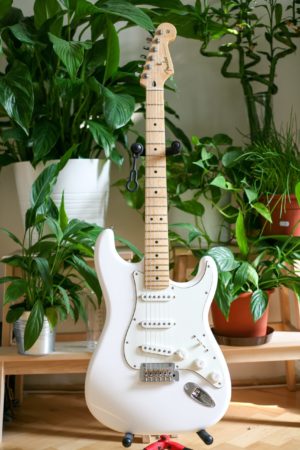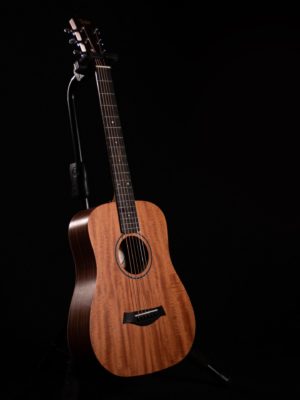4 Types of Guitars You'll See on Stage

If you’ve ever been to a rock concert, or seen a video of one, you might have noticed something: there are usually a few different guitars on stage. And if you are new to guitar, or aren’t so familiar with guitar playing, you might have wondered, “why?” One of the reasons for this is that each player usually has a different role in the performance. Some guitarists play rhythmic parts. Some guitarists play lead melodies and licks. And often times you’ll find that these different roles require different types of guitars. So today, we’re going to break down 4 of main types of guitars you’ll find on the stage.

1. Electric Guitars
The electric guitar is probably the most common type of axe you’ll find up on the stage. Electric guitars rely on magnetic pickups that translate string vibrations into electrical energy. This energy then travels via an audio cable to an amplifier and speaker, which produce the guitar’s sounds. Though pickups are generally interchangeable, some guitar models are known and designed for certain types of playing. For example, the guitar in this photo is a Fender Stratocaster, which is popularly associated with lead guitar legends like Eric Clapton and David Gilmour. Other types of “lead” electric guitars you’ll see, especially at metal or math rock shows, are 7 or 8-string guitars. Schecter and Ernie Ball are two manufacturers known for their selections of these types of guitars!
Other electric guitars have pickups and builds that are better suited for strumming and rhythm playing. The Rickenbacker 325, for example, was a favorite of one of the most famous rhythm guitar players in history, John Lennon. Another feature of some rhythm-oriented electric guitars is a hollow or semi-hollow body. Gibson’s notorious ES-335 model is a prime example of a semi-hollow body electric guitar.

2. Acoustic Guitars
If you’re at a rock show, you may only see an acoustic guitar once or twice (if at all) during the performance. This type of guitar utilizes the resonance of a hollow wooden body to amplify the sound of its strings. And thus, acoustic guitars are more popularly used to accompany solo singers or small acoustic bands. They are also used to add a lighter rhythmic textures to full band performances.
Of the types of guitars we’re covering here, the acoustic guitar is probably the one you have seen at your friend’s house, being played on a street corner, or being strummed at a campfire. One of the main reasons for their universal popularity is that they are very portable and require no other equipment to deliver a performance. You can find a HUGE selection of affordable acoustic guitars on Sweetwater!

3. 12-String Guitars
A 12-string guitar might be tough to spot from the crowd if you don’t know what to look for. Appearing almost identical other electric or acoustic axes, the 12-string is one of the types of guitars that is mainly used for supporting the rhythm and underlying harmony of a song. If you’ve never seen one before, 12-string guitars feature six pairs of strings, eight of which are typically in standard tuning. The first two pairs are tuned in unison to E and B respectively. Then the next four pairs are tuned in octaves to G, D, A, and E. So, when it comes to learning how to play a 12-string, it’s not much different than learning on a standard 6-string!
In this photo, 1970s no wave rocker, Arto Lindsay wields a Danelectro Hawk 12-string guitar. Notice the machine heads on the headstock – there are 6 on each side! Thought these particular vintage models are hard to come by, you can find similar ones on Sweetwater!

4. Bass Guitars
Speaking of the rhythm section, you have probably never been to a concert where a there wasn’t a bass guitar. Unlike other types of guitars, bass guitars are not typically used to play chords or solos. Instead, a bassist’s typical duties include providing a harmonic foundation, “locking in” rhythmically with the drummer, and emphasizing the groove of the song. These duties are underpinned by the thick strings on a bass, which help produce sub frequencies that are essential to the overall feeling of any tune.
Some famous bass players you might recognize are Sting (The Police), Flea (The Red Hot Chili Peppers), and Sir Paul McCartney. Feeling inspired to grab a bass of your own? You can find a massive selection of them over at Sweetwater!
Excited to look at some new gear? Find all kinds of great guitar gear deals over at Sweetwater.com.
For guitar lessons that teach you how to use effects like these, check out JamPlay.com! JamPlay has over 450 guitar courses from 120+ instructors, LIVE daily instruction, and online guitar lessons tailored to every skill level, music genre, and playing style. Click here to learn more.
Share this
Become a JamPlay member for unlimited access to 7000+ guitar lessons and 120+ artists and instructors. View membership plans ›


